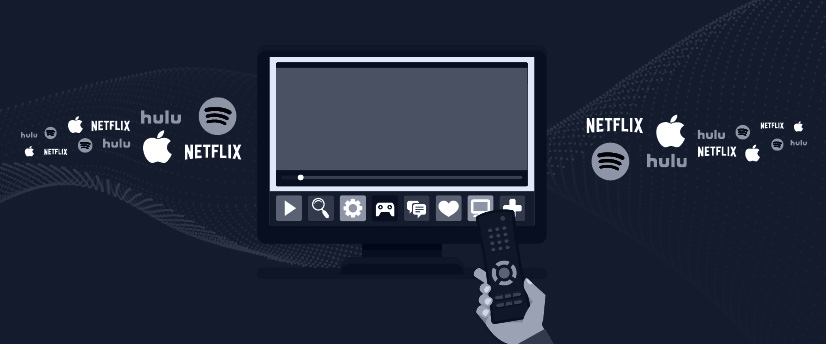Media consumption habits, specifically over-the-top OTT advertising habits, have changed for the long haul, all thanks to the current global pandemic. In fact, 92% of Americans say they are spending more time on in-home media activities. More so — 86% of American consumers share they are spending more time using at least one digital device since the start of the outbreak. And if those stats don’t grab ya, here are a few more:
- 44% of U.S. consumers report they are watching more shows/films on streaming services while at home because of the COVID-19 outbreak.
- 33% say they are watching more videos (e.g. on YouTube) due to stay-at-home orders.
- Prior major crises that caused U.S. consumers to stay home resulted in a 61% increase in streaming. While home during past crises, people most often tuned in to news, general-format programming and feature films.
- 29% of U.S. consumers report using their smart TV/media streaming devices more during this time. 11% of U.S. consumers say they are spending more on streaming subscriptions than they typically would.
- Streaming apps are becoming more popular. Nearly 50% of U.S. consumers have added a free streaming service since the beginning of 2020. Another 20% of U.S. consumers have subscribed to a paid streaming service due to COVID-19.
- 35% of U.S. consumers say Netflix is the streaming service they have watched most during quarantine, compared to 10% for Hulu and 9% for Amazon Prime Video.
Considering OTT advertising for your brand
The increase in streaming TV/video consumption habits is not expected to change any time soon. Should your brand consider investing in advertising in this space?
First, you’ll want to understand what OTT advertising is. Many folks use this term synonymously with connected TV (CTV). While they are related, they are not twins. While it uses similar targeting mechanisms, OTT refers to video advertising only. See below for a break down of these definitions and more.
OTT
OTT is a streaming media service (ex. Hulu or Sling) offered directly to viewers via the internet. OTT bypasses cable, broadcast and satellite television platforms, the companies that traditionally act as a controller or distributor of such content.
CTV
CTV is the purchase of traditional TV-spot-style placements through the use of smart TVs and streaming devices that are attached to TVs. Audience targeting can be layered in outside of typical programming or station targeting. Mobile and desktop devices are not included under the term CTV.
Streaming audio
Audio ads are run on websites, apps and platforms to stream radio, podcasts and other forms of audio. They’re oftentimes in the form of 15-second, 30-second or 60-second spots and accompanied with a display ad.
Audience targeting for OTT advertising
Since OTT can be streamed on your phone, tablet or smart TV/streaming device, your options to reach your target audience are broad. The technology roots itself in the basic principles of programmatic ad buying and serving. This focuses on the person, not the place. The most common targeting options for OTT advertising include your standard parameters, such as location, TV/video content and device, as well as broad demographic data, such as gender, age, etc. While these are all great, they don’t overly differ from purchasing standard broadcast TV. The icing on the OTT advertising cake lies in the introduction and layering of first- and third-party data and look-alike modeling based on conversion goals.
How targeting breaks down:
- First-party data is the information you collect directly from your audience; examples include:
- Data from actions, interests, behaviors, etc. across your website or app
- CRM data
- Surveys
- Subscriptions
- Social
- Third-party data is purchased and layered in from other or outside sources. Data can be purchased (private) or pulled (public) by large data companies. These data companies aggregate the data into one large data set and sell it as third-party data. (Yes, I said data seven times!)
- Conversion goals are measured by pixels placed across your website to attribute campaign success to measurable action. Examples include form completions, click-to-calls, etc.
- Note: These are harder to implement on OTT advertising campaigns as many do not offer a click option. OTT’s primary goal should be reach, frequency and product/brand awareness or lift.
- Purchase CTV the same way. Just keep in mind it is served through smart TV and TV streaming services only. CTV makes more assumptions about who you are and relies on your IP address to associate said targeting methods.
Ok, so now that we are speaking the same language…how do you go about adding OTT advertising to your media buy? The answer is easy — give Lessing-Flynn a call.
Sources: Global Web Index, Centro, iHeart Media, Neilsen
LF Newsletter Alert
Want Lessing-Flynn to rock the socks off your inbox with insights and more?




